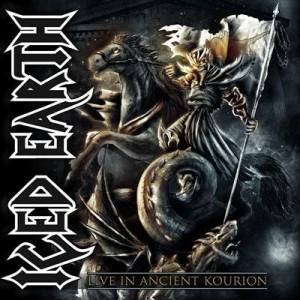 Power metal is a sub-genre composed of aggregates. The most basic definition of it is heavy metal catching up with speed metal and (sometimes) death metal. There are variants within that.
Power metal is a sub-genre composed of aggregates. The most basic definition of it is heavy metal catching up with speed metal and (sometimes) death metal. There are variants within that.
(more…)
Tags: iced earth, power metal
 Power metal is a sub-genre composed of aggregates. The most basic definition of it is heavy metal catching up with speed metal and (sometimes) death metal. There are variants within that.
Power metal is a sub-genre composed of aggregates. The most basic definition of it is heavy metal catching up with speed metal and (sometimes) death metal. There are variants within that.
(more…)
Tags: iced earth, power metal
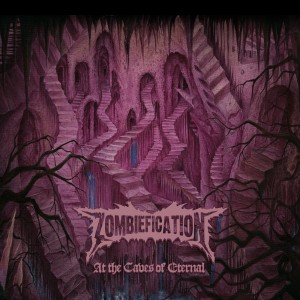 Zombiefication incorporate many styles into their old school styled death metal but their ultimate forte is melodic death metal in the style made popular by early Necrophobic or Unanimated.
Zombiefication incorporate many styles into their old school styled death metal but their ultimate forte is melodic death metal in the style made popular by early Necrophobic or Unanimated.
This band contributed a track to the Cenotaph tribute album and it’s hard not to think of the second and third Cenotaph albums which used the stylistic span between At the Gates and Therion’s Lepaca Kliffoth. In addition, Zombiefication use riffs much like early Amorphis, if Amorphis were interested in single-string picking of quick melodies.
Not all is old school however. At the Caves of Eternal features vocals that might be more at place on later At the Gates or The Haunted albums. They are nearly monotonic and do not vary style or inflection between songs, which gives them a consistency that breaks from the death metal tradition that all instruments labor toward the same effect. Drumming is more modern as well, with a jazz-fusion influence that is understated but prevalent. In addition, many of the leads follow more of a rock sense of theme and balance than the metal goal of high intensity chaos forming order despite itself.
At the Caves of Eternal uses the melodic death metal style effectively across this album, with the songs clustered near beginning and end having the most punch. If it has a fault, it is not stylistic, but in substance; the emotions and approach do not seem to vary between songs, making them variations on a theme that may be entirely musical. However, if you want to revive the old school melodic style, this album presents a potent option.
2 Comments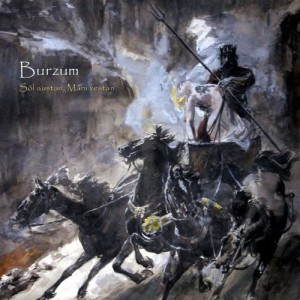 The latest album from Norwegian one-man black metal/dark ambient band Burzum will be entitled Sôl austan, Mâni vestan (East of the Sun, West of the Moon) and will be released in coming months on the Peaceville sub-label Byelobog.
The latest album from Norwegian one-man black metal/dark ambient band Burzum will be entitled Sôl austan, Mâni vestan (East of the Sun, West of the Moon) and will be released in coming months on the Peaceville sub-label Byelobog.
According to the press release authored by Varg Vikernes, this album will be like the other Burzum albums a concept album.
Sôl austan, Mâni vestan is near release but as of this morning samples were released, and the following teaser video combines visual and sound to reveal what to expect on this forthcoming work. Like the previous Burzum albums, it features use layered sampled sounds and keyboards, including some tribal drums, but without the constant percussion of modern pop.
Comparing it to Tangerine Dream, Vikernes described the new album as “relaxing, slow-paced, contemplative and very much original.” The topic on this one is said to be the “Pagan religious-spiritual concept of a descent into darkness and the follwoing ascend back into the light; the Pagan initiation, the elevation of man to the divine, the enlightenment of the mind, the feeding of the elven light in man.”
9 Comments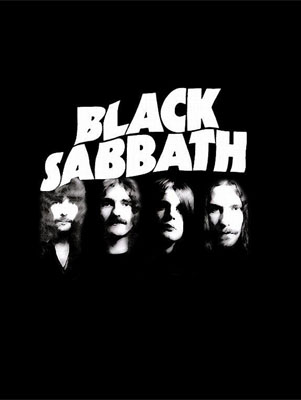 Black Sabbath has revealed their complete North American touring schedule for the summer and fall of 2013.
Black Sabbath has revealed their complete North American touring schedule for the summer and fall of 2013.
Starting at the end of July in Houston, the band will bring a mixture of new and old songs across the country, with their final gig at the beginning of September.
Listeners can expect to hear a wide variety of styles during one concert, as the band’s history provides fertile ground for selections from the blues-influenced hard rock and heavy metal genres.
Tickets will go on sale starting in May and are expected to sell out quickly, as this may be the last time the band graces this continent.
Tags: black sabbath, Heavy Metal, tour
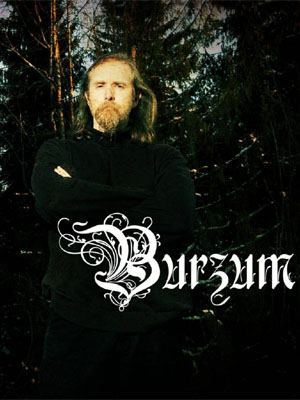 The semi-reclusive Varg Vikernes, sole composer of Burzum, has announced his plans to release a film and a new role-playing game (RPG). As part of the film project, he has revealed a new track designed to act as part of a soundtrack for the film.
The semi-reclusive Varg Vikernes, sole composer of Burzum, has announced his plans to release a film and a new role-playing game (RPG). As part of the film project, he has revealed a new track designed to act as part of a soundtrack for the film.
As if influenced by some of the non-black-metal soundtrack material from the film Until the Light Takes Us in which Vikernes, as in Lords of Chaos, the most in-depth story of black metal before it, Vikernes opts for a down-tempo single guitar track with no distortion.
The result utilizes a slow and gentle sweeping arpeggio behind which lower notes direct the evolution of the track, much as happened with the countertheme in “Rundgang um die transzendentale Säule Der Singularität” from Filosofem. As the song goes on, these layers interact to push change into the main theme, not in the electronica method of circular layers, but the metal one of a narrative expanding from within itself.
It is hard to tell if this is the type of material that will be on the forthcoming Burzum album Sôl austan, Mâni vestan. While many consider the “keyboard albums” among the band’s best output, a mixed-medium album could be interesting. While this new track has one foot in that world, it also has one foot in the more audience-geared world of the last few Burzum black metal albums.
19 CommentsTags: Ambient, Black Metal, burzum
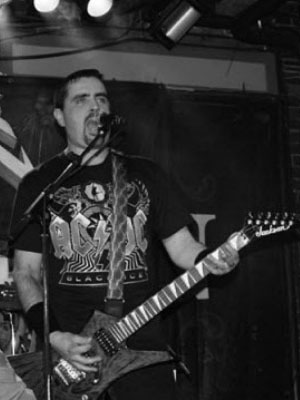 Jeff Sprague is a Canadian politician who is also a heavy metal musician. By day, he works in private security and is a member of the Conservative Party of Canada. By night he fronts a Metallica tribute band titled Damage Inc.
Jeff Sprague is a Canadian politician who is also a heavy metal musician. By day, he works in private security and is a member of the Conservative Party of Canada. By night he fronts a Metallica tribute band titled Damage Inc.
This may seem an unusual marriage, but consider: if we recognize that heavy metal expresses eternal values that are worth spreading; in the age of democracy, politics can be an effective method of achieving this. Rather than dismissing politics, Hessians should strive to get in and turn it in a more positive direction, as this not only improves political discourse, it also increases awareness of the Hessian community.
Unfortunately for Mr. Sprague, last Thursday he initiated a late night drunk driving incident. As reported by The Province, he decided to suspend his candidacy. A disappointing end, but one that offers a theme to reflect upon: politics requires a high degree of public professional behavior, something Hessians striving to achieve political change should take note of.
5 Comments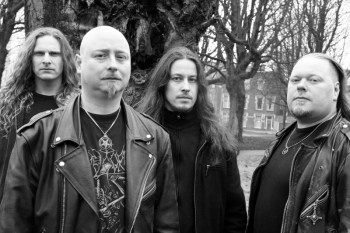 The “first ever death metal band from the Netherlands”, Thanatos, have recently signed a deal with Century Media Records. The record company initially only expected to re-release some of the legends’ back catalogue, but Thanatos’ sixth album will now see the light on CMR:
The “first ever death metal band from the Netherlands”, Thanatos, have recently signed a deal with Century Media Records. The record company initially only expected to re-release some of the legends’ back catalogue, but Thanatos’ sixth album will now see the light on CMR:
When Stephan and Paul visited the CM headquarters in Dortmund in autumn last year, they told us about their plans to record a new album which they’d like to release in 2014 […]. Of course we wanted them to release it on Century Media.
Stephan Gebédi, vocalist/guitarist of the band, who recorded their first demo back in 1984, said they intend to record
6 Commentsan absolute death/thrash metal monster to coincide with our 30th anniversary in 2014! We come from an era when there was no strict boundaries between thrash and death metal which resulted in masterpieces like DARK ANGEL’s “Darkness Descends” and POSSESSED’s “Seven Churches” and it’s our mission to transport the legacy of those albums to 2014 and beyond…
Tags: deals, new releases, Thanatos
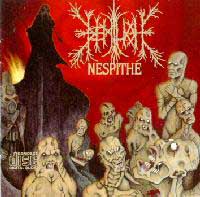 In a Google+ post, Demilich guitarist/vocalist Antti Boman both announces the arrival of a Demilich compilation CD on Svart Records, and calls for those with “artifacts” of the Demilich era to send them to him or end a link to where to download the material.
In a Google+ post, Demilich guitarist/vocalist Antti Boman both announces the arrival of a Demilich compilation CD on Svart Records, and calls for those with “artifacts” of the Demilich era to send them to him or end a link to where to download the material.
“The Demilich demo compilation CD and LP will be coming out in autumn. If you have old photos, flyers, or other Demilich memorabilia, good quality scans or originals will be gladly received,” Boman wrote, then added: “Thanks for the idea, dear brothers of Svart Records.”
For those who are joining death metal later in life, Demilich was one of the first death metal bands to break out of the fast and brutal and get into the weird and nuanced. Its style, featuring spidery lead rhythm playing slowly rotating to reveal a melodic core, influenced all that came after it.
While many in the early 1990s were slow to catch on to the value of technical death metal, perhaps fearing the wankery of the 00s that haunts us to this day and was dominant in “progressive” hardcore at the time, Demilich‘s return in 2006 brought huge crowds of maniacs to hail this unique and powerful band.
8 CommentsTags: death metal, Demilich
 Why is metal riff-crazy? These twisted little quasi-melodies of sliding power chords, notes and harmonics are tiny puzzles for our brains. Now science hints at why metal loves them.
Why is metal riff-crazy? These twisted little quasi-melodies of sliding power chords, notes and harmonics are tiny puzzles for our brains. Now science hints at why metal loves them.
Apparently, our brains love guessing what’s next in music, and perceive an intense sensation of reward if they guess correctly. For all those who identified metal’s riff-salad as a “puzzle,” you win a prize.
Like the labyrinths to which they are frequently compared, metal songs create a prediction game within the brain and cause an explosion of neural activity in a part of the brain called the nucleus accumbens. This tiny wad of cells, which sits in the pleasure/reward center of the brain, gives us a throbbing blast of “reward” every time we play the guess-where-this-riff-goes game.
Both metal and classical play this game. They specialize in intense repetition of certain phrases, but unlike rock music, the repeated phrases do not necessarily lead to the same conclusions, and in fact alter their destinations and form throughout the work. This keeps the guessing game intense and, while we’re distracted with the riffology, shows a change in themes, which if themes are metaphorical, shows a learning process by whatever protagonist may be inferred from the work.
Musicologists have often wondered at the tendency of metal fans and classical fans to be more devoted and to be more likely to enjoy the music over the course of life itself than your average rock or pop fan. In fact, the similarities between metal and classical frequently emerge among those who take their music very seriously. Could it be they’re simply getting a higher sense of reward from the riff-puzzle and its tendency toward non-repetitive repetition than they are from the relatively straightforward repetition of other styles?
12 CommentsTags: Classical, metal, musicology, riffology
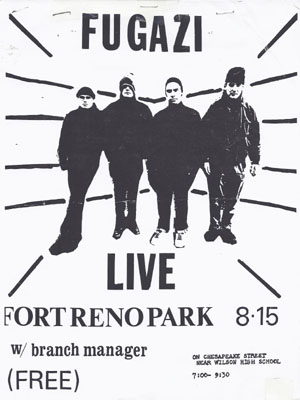 During the late 1990s, a different style of metal emerged in the death metal camp. Starting with bands like Dillinger Escape Plan, Killswitch Engage, Misery Index, The Haunted, Human remains, Ulcerate, Meshuggah and Discordance Axis, this new style was given many names at first.
During the late 1990s, a different style of metal emerged in the death metal camp. Starting with bands like Dillinger Escape Plan, Killswitch Engage, Misery Index, The Haunted, Human remains, Ulcerate, Meshuggah and Discordance Axis, this new style was given many names at first.
It’s math-metal, they said. No, it’s technical death metal (later shortened to “tech-deth” to keep people from expecting something like what Pestilence did on Spheres). Finally someone came up with “modern metal,” which many of us use like a catch-all.
The record companies were excited. Musically it was different. This style is accessible to more musicians, in addition to more fans, than the old style. It’s easier to make a reasonable impression of it, at least.
Thematically it was different. It’s everything that rock ‘n’ roll has always been. It’s loud, angry, and chaotic; perfect to disturb parents, which sells albums. Finally, unlike metal, it doesn’t stray into truly dangerous areas of thought. It is more likely to be written from an individual perspective, and less likely to glorify war, disease and death than protest them. Socially, it’s much “safer.”
What made it new was that it wasn’t like the extreme metal before it. However, it shared many techniques in common not just with that generation, but the generation before it. Specifically, many of the composition aspects are similar to those from post-hardcore bands like Fugazi, Rites of Spring, and Botch. These differences distinguished it from death metal in the following ways:
Critics of the terms “metalcore” and “modern metal” correctly note that these terms are being used as a catch-all. That’s correct, but it’s only part of the story. These terms are being used to describe something that’s not new, but existed before death metal and black metal reached their modern form. It’s an alternate branch of metal’s evolution, upgraded with death metal technique.
For students of metal history, this isn’t surprising. Genres tend to lie dormant in alternating generations, and then pick up on whatever was done well by the intervening generation. For example, power metal is what happens when speed metal and glam metal bands integrate death metal technique. Grindcore occurs when hardcore adopts crust and death metal technique. Speed metal occurs when metal adopts punk technique. By the same token, metalcore is what happens when you mix Fugazi with death metal technique.
This is not an argument against metalcore. If we’re going to like metal, we should understand it; if we’re going to understand it, we should study it; if we study it, we should organize our categories and language so as not to mislead each other. By this analysis, metalcore is an extension not of metal, but of the post-hardcore movement using metal technique, and thus it should be analyzed as more like hardcore instead of having us project our metal expectations upon it.
24 CommentsTags: indie metal, math-metal, metalcore, modern metal, nu-metal, tech-deth, Technical Death Metal